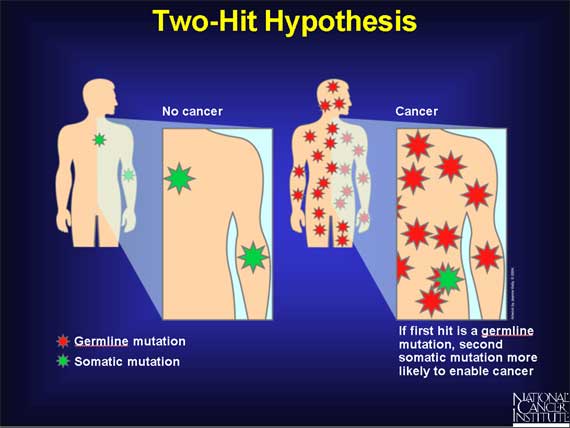|
In 1971, Dr. Alfred Knudson proposed the two-hit hypothesis to explain the early onset at multiple sites in the body of an inherited form of cancer called hereditary retinoblastoma. Inheriting one germline copy of a damaged gene present in every cell in the body was not sufficient to enable this cancer to develop. A second hit (or loss) to the good copy in the gene pair could occur somatically, though, producing cancer. This hypothesis predicted that the chances for a germline mutation carrier to get a second somatic mutation at any of multiple sites in his/her body cells was much greater than the chances for a noncarrier to get two hits in the same cell.
Tumor suppressors act recessive at the phenotypic level (both alleles must be mutated/lost for cancer to develop), but the "first hit" germline mutation at the genotypic level is actually inherited in an autosomal dominant fashion.

< Previous | Index | Next Slide > |